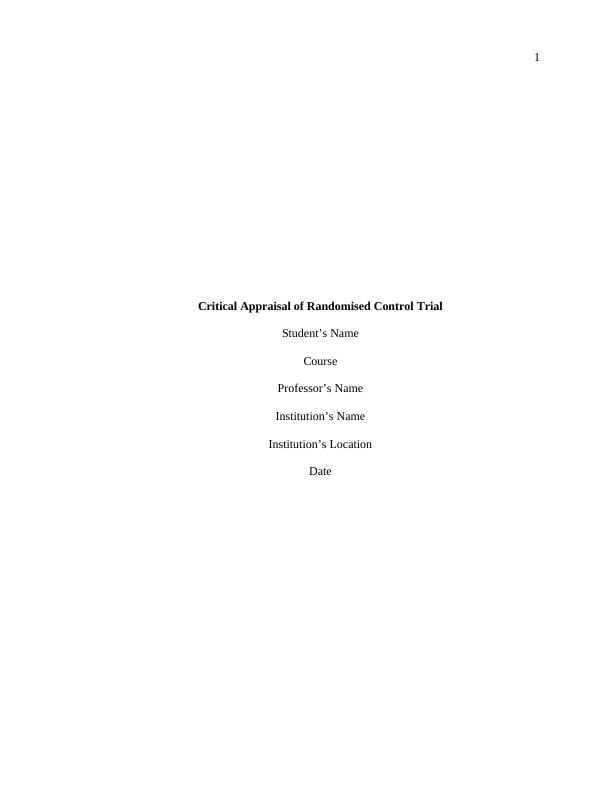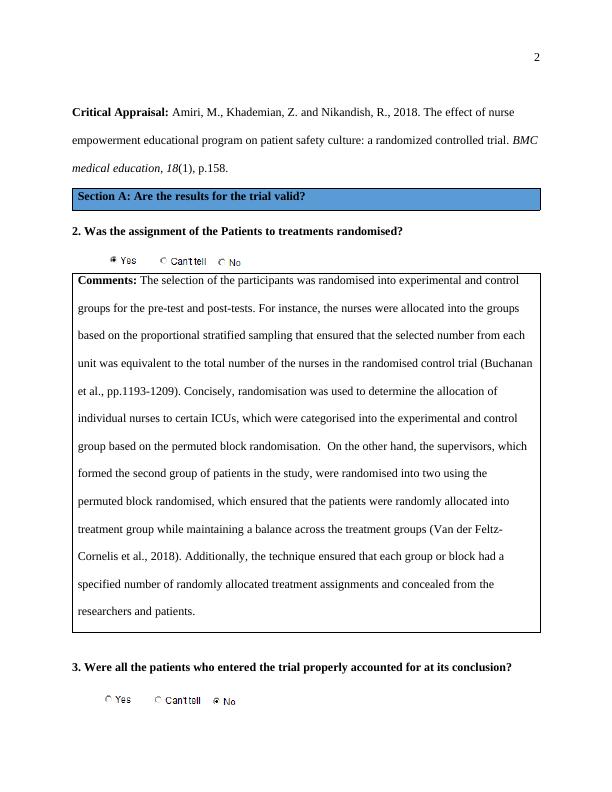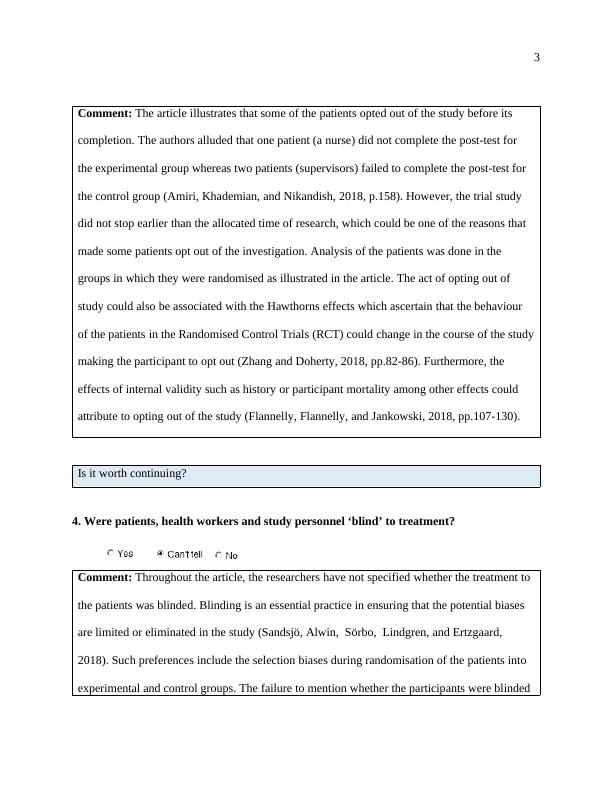Critical Appraisal of Randomised Control Trial
This assignment requires a critical appraisal of a randomised control trial, focusing on addressing specific questions from the CASP RCT checklist and demonstrating understanding of key areas to be considered when critically appraising a trial.
9 Pages2112 Words52 Views
Added on 2023-01-18
About This Document
This document provides a critical appraisal of a randomised control trial on the effect of a nurse empowerment educational program on patient safety culture. It evaluates the validity of the trial, treatment effects, and applicability to the local population. The document also discusses the benefits and costs of implementing the results.
Critical Appraisal of Randomised Control Trial
This assignment requires a critical appraisal of a randomised control trial, focusing on addressing specific questions from the CASP RCT checklist and demonstrating understanding of key areas to be considered when critically appraising a trial.
Added on 2023-01-18
ShareRelated Documents
End of preview
Want to access all the pages? Upload your documents or become a member.
Effect of Nurse Empowerment Educational Program on Patient Safety Culture: A Randomized Controlled Trial
|9
|2326
|391
Effect of Nurse Empowerment Educational Program on Patient Safety Culture
|10
|2469
|59
The Effect of Nurse Empowerment Educational Program on Patient Safety Culture: A Randomized Controlled Trial
|8
|6867
|79
Critical appraisal of an article using the CASP tool
|9
|2490
|277
Article on Effectiveness of Preoperative Immunonutrition
|4
|691
|137
Critical Appraisal Skills Programme Tool Assignment
|15
|3900
|79



